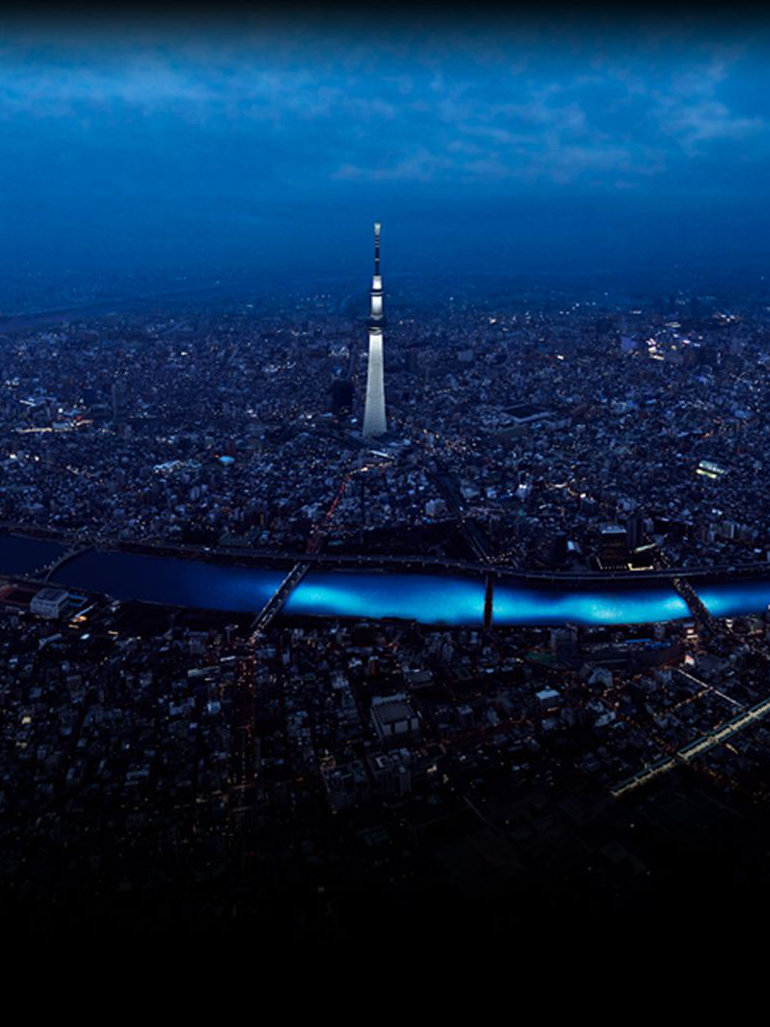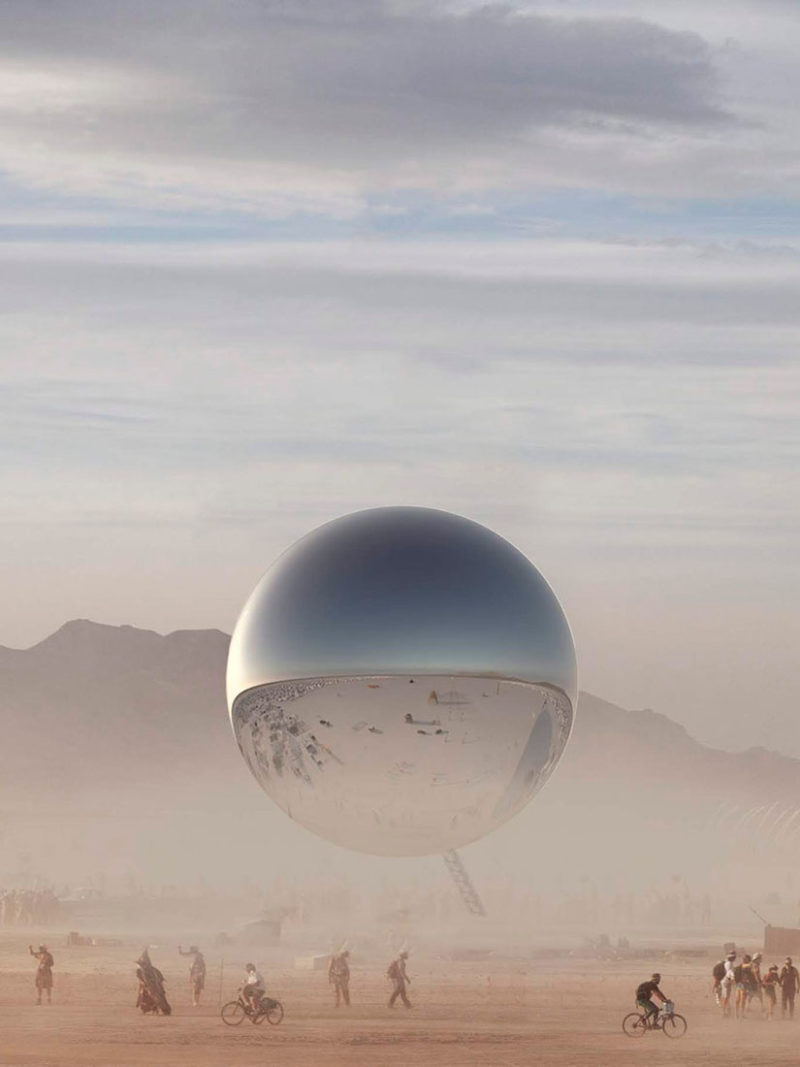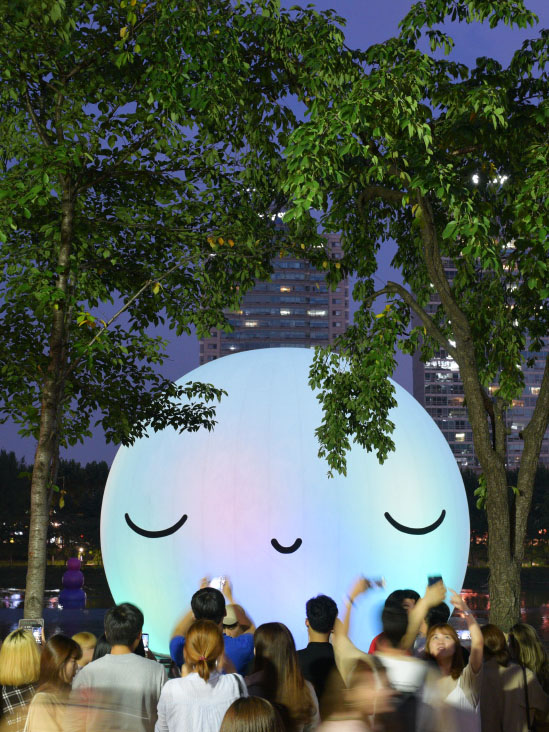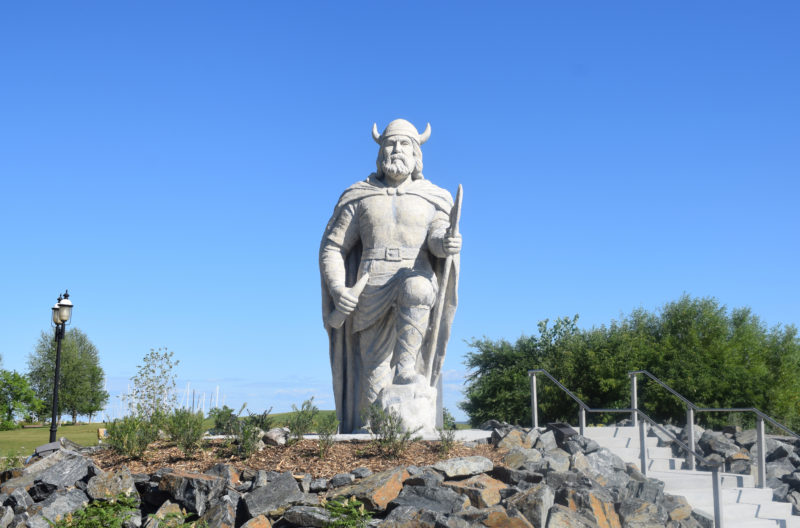
Introduction
This year, Íslendingadagurinn will be held for its 133rd edition and will be held in person for the first time since the pandemic broke out. Also commonly referred to as the Icelandic Festival of Manitoba, Íslendingadagurinn is usually held in Gimli, Manitoba (Canada) with plenty of indoor and outdoor events on offer for those attending.
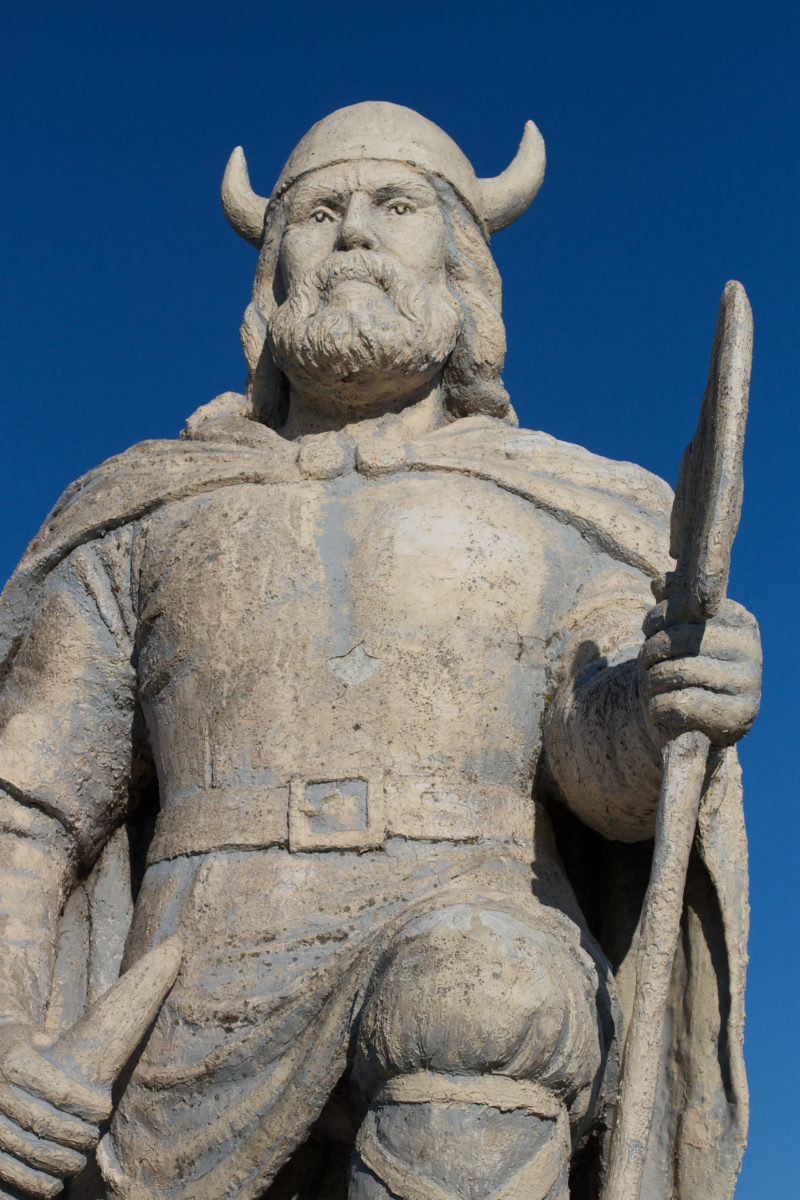
During the festival, individuals from all corners of the world travel to experience Icelandic culture and heritage in Gimli. Indeed, the Icelandic Festival of Manitoba is one of the longest-running Icelandic festivals in the world. The festival organizes various events thanks to volunteers and sponsors that assist with planning and operations.
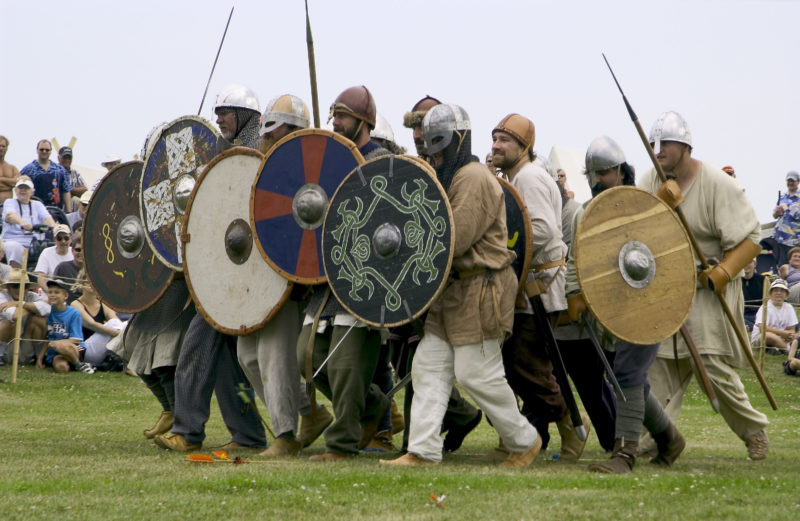
Some of the events include watching Vikings re-enactors and interacting with others in traditional Icelandic costumes. There are also lots of games such as Fris-Nok and lots of food and entertainment.
About the Viking statue
While the festival takes place only once a year during a weekend in August, there is one thing that people can visit all year round that’s reminiscent of the event: The Viking statue. Gimli is home to a massive Viking statue that is proudly displayed in Viking Park.
The statue was created to commemorate the country’s 100th birthday and to pay homage to the ancestors of the Icelandic people who colonized the Gimli area (known as New Iceland back then) in 1875.
Constructed from fiberglass, the figure is 15 feet (4.65 meters) tall and was conceptualized by Gissur Eliasson. Although Eliasson, who was with the University of Manitoba at the time, designed the sculpture, it was consequently constructed by a local Manitoban artist known as George Barone.
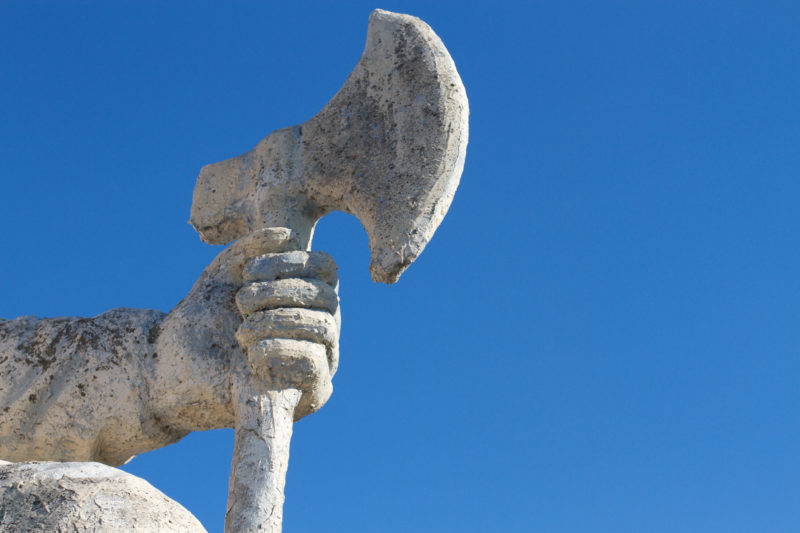
Gissur Eliasson was not only a member of the school’s teaching staff but also a respected painting instructor and a member of the local art community. Eliasson would retire from teaching in 1978 and passed away two years later in Winnipeg. Barone, on the other hand, was born in Italy, but his family moved to Winnipeg in 1951. He started off creating plaques and figurines for businesses before he became a sculptor full time.
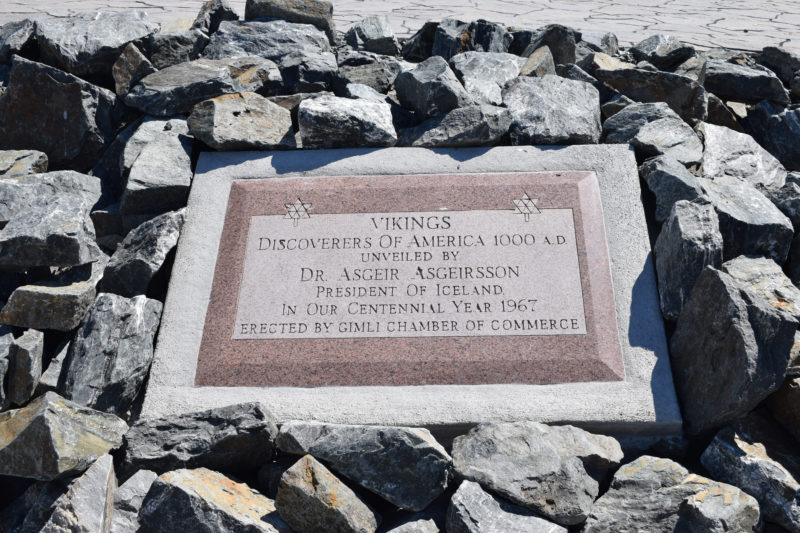
He is charged with creating most of the monuments in Manitoba. Barone was a highly sought sculpture owing to his special technique of utilizing fiberglass cloth, steel rods, and air-filled foam as his materials of choice. He was also known for using color-impregnated resin, which is known to withstand the extreme Canadian weather better than most other construction materials.
Artist pressed to add horns
Curiously, the Viking statue is nearly entirely realistic, besides one apparent detail: The horns. Gissur Eliasson submitted a sketch that showed the Viking with a helmet and no horns. This was a historically correct depiction, as Vikings didn’t sport horned helmets during armed conflicts. Yet the Gimli Chamber of Commerce intervened. They had already ordered a considerable amount of plastic helmets with horns and urged the artist to add horns to the sculpture.
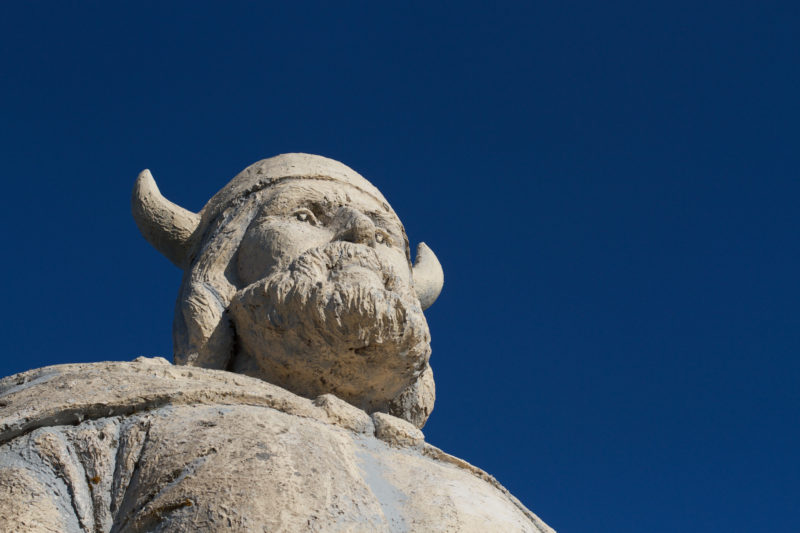
Renovation
Decades after the inauguration, the statue started showing signs of wear and tear. 48 years after construction, a two-week refurbishing process started, which cost $60,000. After an Alberta company completed renovation, another reveal featuring dignitaries from all over Canada took place.
Unveiling
It cost the duo approximately $15,000 to create the statue. When it was finally completed, it was unveiled by the then President of Iceland, Asgeir Asgeirsson. Years after the presentation of the sculpture, the park has continued to add several more elements in the pursuit of preserving the beloved Icelandic heritage. For instance, the park has since added indigenous flowers.
Location
The Viking statue is roughly a one-hour drive away from Winnipeg and is located along the shores of Lake Winnipeg. It can be visited 24/7. Glenn Eliasson, the designer’s son, commented on the location1 as follows:
He wanted the Viking to be standing looking over the water, he wanted the Viking to have very powerful hands. Everything he did, he wanted symbolism and representation.
Tel: +1 204-642-6650
Address: 104 2 Ave, Gimli, MB R0C 1B0, Canada
The park is also segmented into three major areas that draw from Norse legend- the Elf Garden, the Breakwater Garden, and the Troll storm garden. Around the pathways, one will also observe commemorative slabs bearing relief designs of popular Icelanders in history and local families. The Icelandic Park welcomed its first visitors in 2018. In that year, Íslendingadagurinn was held for the 128th time.
